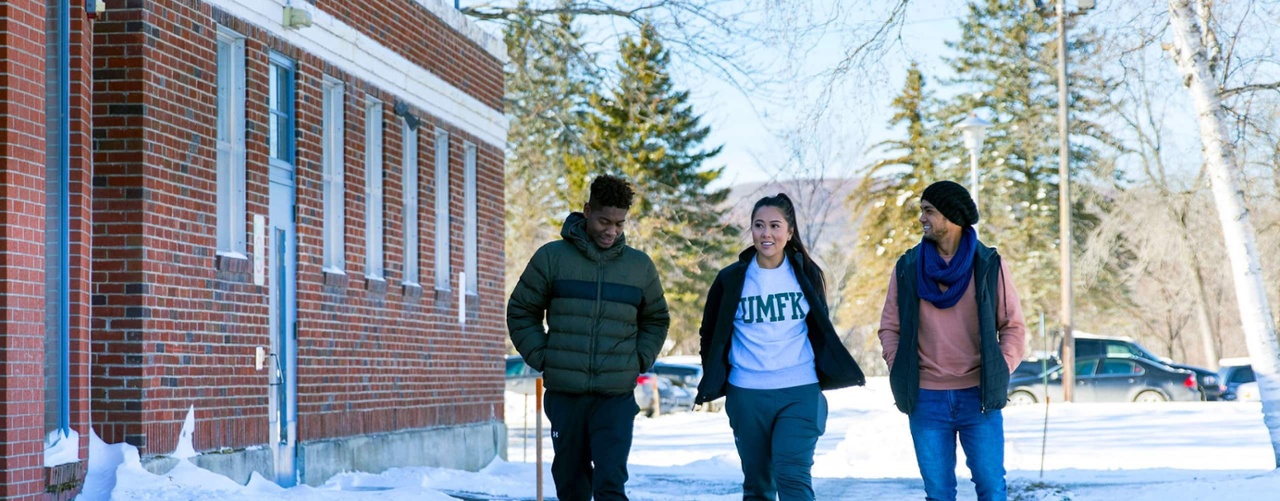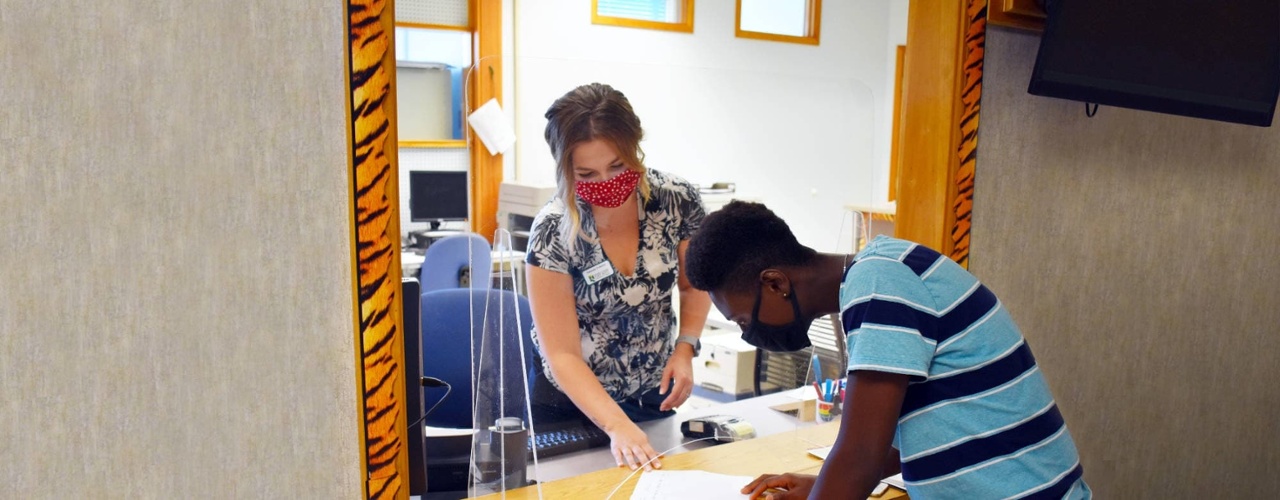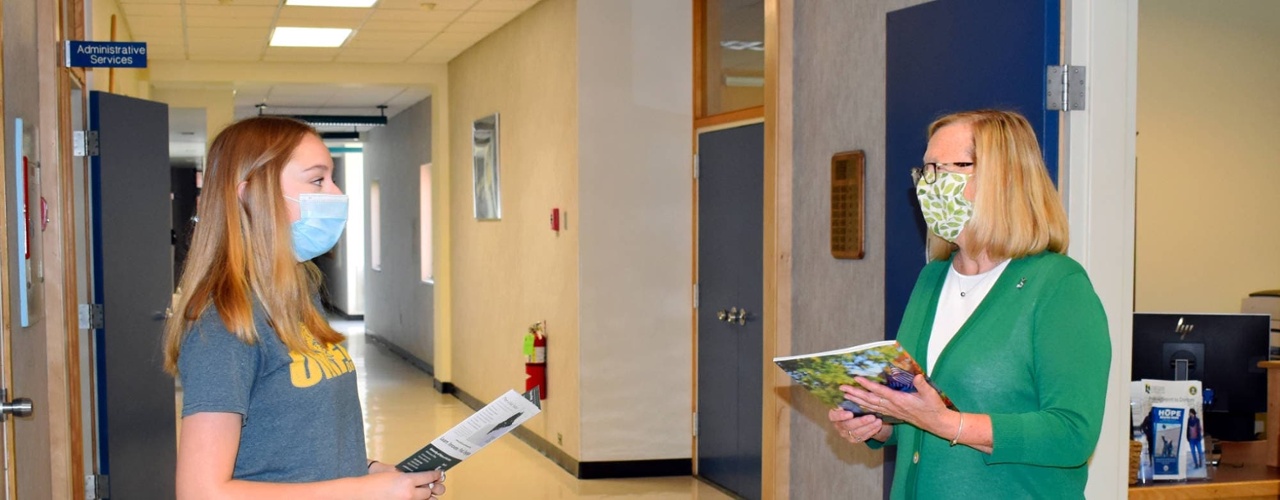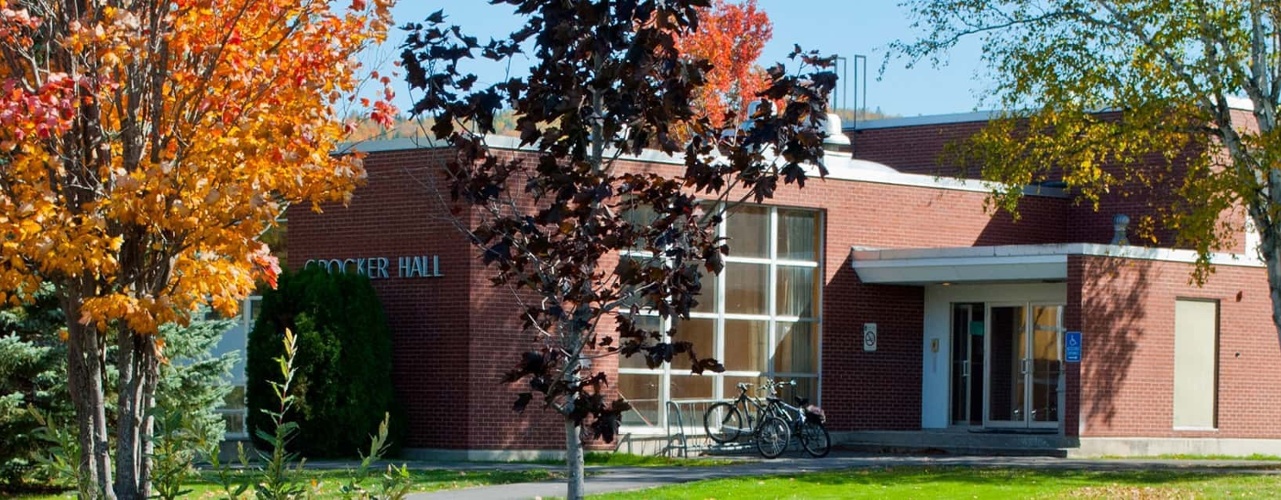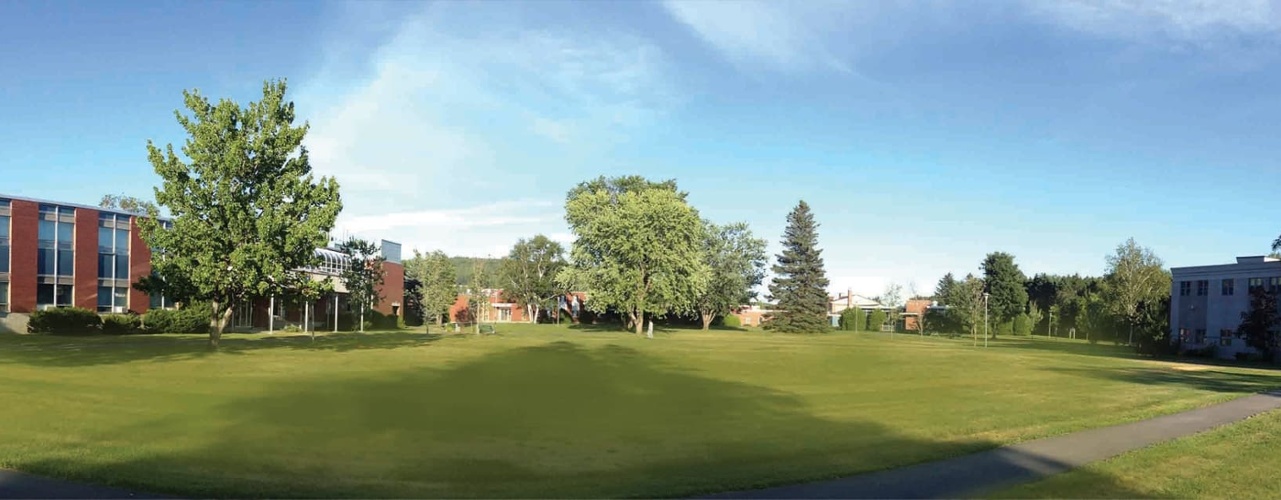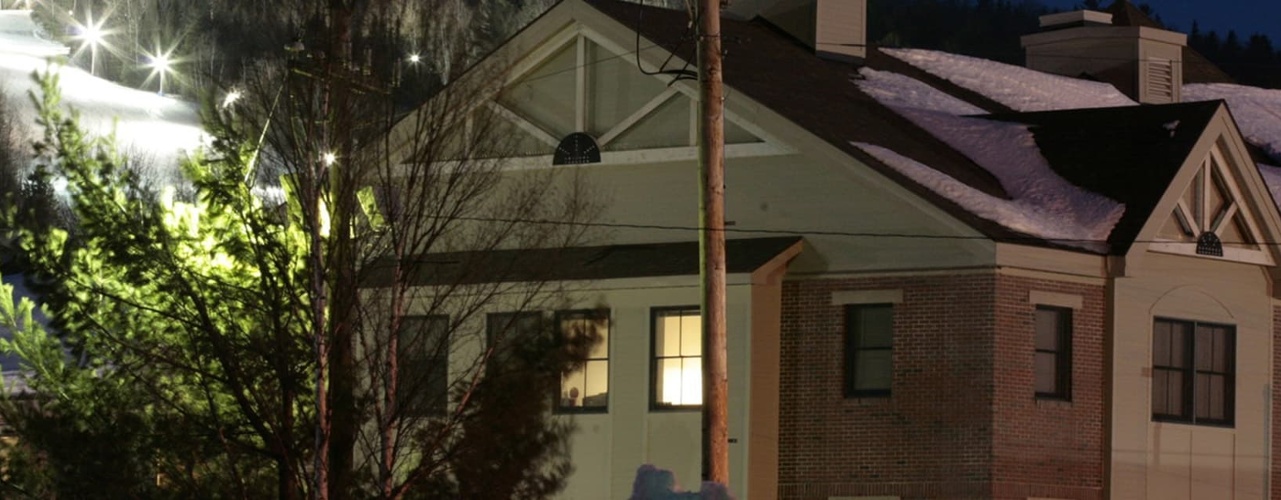
Latest News
UMFK scientist part of team to study fog oasis
October 28, 2014
Note: this is an archived news release. As such, the information provided may no longer apply.
NR14078
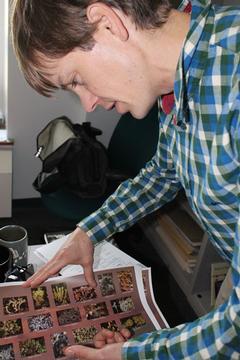
LICHENS AND MORE LICHENS – Dr. Peter Nelson points out some of the many lichens he has studied. The UMFK professor is joining two other scientists, Daniel Stanton from the University of Minnesota and Chilean lichenologist Reinaldo Vargas, to study the lichens in a fog oasis located near the coast of Chile.
University of Maine at Fort Kent's newest expert on lichens, Professor Peter Nelson, is part of a team that in April will study the strange organisms in a rare oasis location in the middle of a dry Chilean desert.
The place has the name of Alto Patache, which is located near the village of Punto Patache 60 miles south of the regional capital of Iquique.
What makes Alto Patache unique is the special kind of oasis that has developed in one of the driest locations in the world. It is more than the presence of water; it is how that water appears. According to Dr. Nelson, a dense fog is the vehicle that brings moisture to the region.
“The fog forms from the temperature and moisture difference between the arid land air mass and humid oceanic air mass that meet at Alto Patache. As the air rises being pushed up the mountain slope by prevailing westerly winds, the oceanic air further cools and loses its moisture through the formation of fog,” said Nelson.
“It's a really amazing place. Dense fog in an otherwise extremely dry environment,” said Nelson. Images of the region reveal a stark landscape of rocks, treeless mountains, the occasional cactus and the Pacific Ocean far in the distance.
Along with primary investigator Daniel Stanton from the University of Minnesota and Chilean lichenologist Reinaldo Vargas, the team is using a $15,000 grant from the National Geographic Committee on Research and Exploration to study how the shapes of lichens regulate water. The researchers hope to determine how different shapes occur at different levels of moisture in the fog oasis.
Lichens are a special class of organism that someone might mistake for a plant, however they would be incorrect. A lichen is actually a combination of up to three organisms, algae, cyanobacteria and fungus that form a composite organism that relies on the symbiotic relationship to survive.
Lichens act as monitors of air quality, ozone depletion, and metal contamination. They can survive in some of the most extreme environments, with researchers demonstrating lichens surviving 34 days under the same conditions as the surface of Mars. They've even survived fifteen days on a Russian Soyuz rocket, exposed to the vacuum of space in orbit around the Earth.
For these researchers, which Nelson described as “young scientist professor types”, the plan is to head out in April to set up equipment in the region and take measurements. Next fall, the team will return to conclude the data collection portion of their research.
The three researchers wrote the grant together in January of 2014, and learned they had received the money in September.
Each one will take on a specialized role in the study. Nelson will crunch the numbers to create statistical models of lichen community composition along the fog gradient, Stanton will work on the ecophysiology of the organisms and Vargas will study the genetics.
Bringing their skills together, the researchers hope to use functional traits and genetics to understand how the fog gradient affects the lichen community.
Nelson said that the team will use a portion of the grant money to fund some laboratory work at UMFK.
Dr. Peter Nelson, Ph.D. recently joined UMFK as an assistant professor of biological science and environmental studies in the Arts and Sciences Division in September.
